Pemberton Technologies Screamin Green Meanie
Pemberton Technologies - Screamin Green Meanie {Kit}
Contributed by Matt Gillard
| Construction Rating: | starstarstarstarstar_border |
| Flight Rating: | starstarstarstarstar |
| Overall Rating: | starstarstarstarstar_border |
| Manufacturer: | Pemberton Technologies  |

Brief:
I won this rocket from the March best rocket competition on TRF. I got the rocket sent super fast from the states to
the UK. Thanks to Layne at Pemberton Technology for such a great prize. It's a hybrid of a 3FNC and a tube fin rocket.
Construction:
The kit comes in a plastic bag and has some of the best instructions I've ever seen in a kit, with step by step
guidance, photos, and every detail with explanations. They're funny to read as well, too, so I won't spoil the fun by
telling you the jokes here.
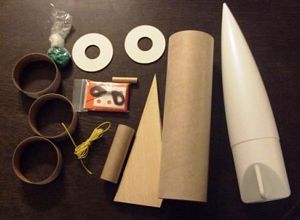 Kit contains all the usual
parts except two--I'll get to those later. The nose cone is great quality, the tubes are strong with some slight
grooves, thick good quality Kevlar®
cord, laser cut parts, etc.
Kit contains all the usual
parts except two--I'll get to those later. The nose cone is great quality, the tubes are strong with some slight
grooves, thick good quality Kevlar®
cord, laser cut parts, etc.
First thing was to build the motor mount. Where's the thrust ring? Where's the engine hook? The instructions explain why these are not included and what to do for retention, etc. I'm just a bit too traditional so I added an engine block and an engine hook (sorry Layne) but this limits the use of motors to Estes D, and I'd quite like to have flown her on an AeroTech E or F.
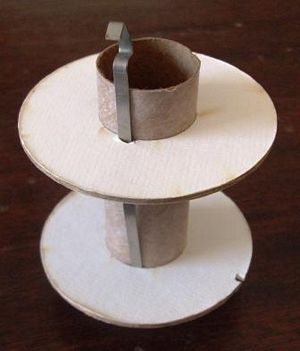
You have to cut a small notch for the Kevlar® cord, of which there is loads--over 7 feet. I added a length of knicker elastic to the Kevlar®. The whole lot was epoxyied together.
While the glue was drying, I sanded the fins. Layne gives a few different methods for filling the fins and I opted for the glue method, only because I have never done that before. In hindsight I should have stuck with sanding sealer. The fins have a notch in the root edge as this is where the ring fins fit. The fins were made of good quality balsa and were laser cut.
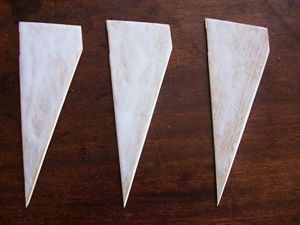
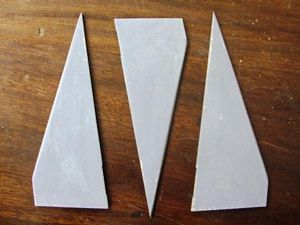
The body tube and the ring fins then had their spiral grooves filled with filler and then sanded smooth. The body tube and fin rings were then marked with the template supplied. The motor mount was then glued into place using white glue and filleted with epoxy.
Next, I glued the fins into the ring fins. I did this with CA gel and then filleted with white glue. Lastly, the lug supplied is cut and attached to the BT with one at the base and one behind the front of the fins. These were then filleted.
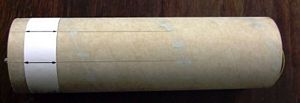
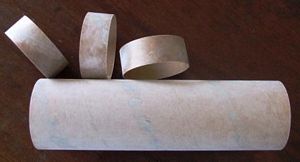
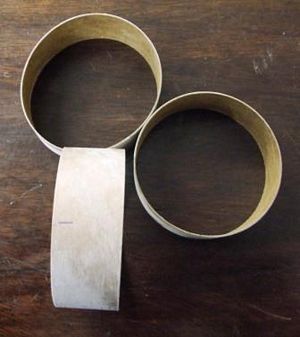
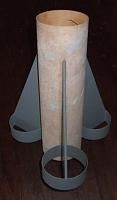

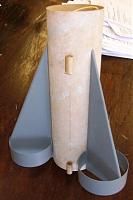
Finishing:
The whole rocket was sprayed with gray primer. The body was sprayed green with the nose cone painted a gloss black.
It was not the best of finishes. The kit does not come with decals.
Construction Rating: 4 out of 5
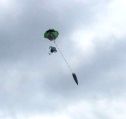
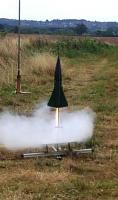
Flight:
I flew her twice on a D12-5. She flies really well and fits in nicely between a Fat Boy and Big Daddy, except she's a
better looking kit.
Recovery:
The parachute supplied with the kit is good, but I have only flown her using a smaller parachute due to winds.
Flight Rating: 5 out of 5
Overall Rating: 4 out of 5
Other Reviews
- Pemberton Technologies Screamin Green Meanie By Claude Maina and Katy Maina (October 28, 2009)
Brief: This is a skill level 1, 24mm engine rocket that has a great look and some unique features. It is easy to assemble and flies very well. The instructions are very clear and detailed with very good illustrations. The kit was a prize offered by Pemberton Technologies for the July 2009 Best Rocket Competition on The Rocketry Forum and won by one of us (Katy). The build and fly ...
- Pemberton Technologies Screamin Green Meanie By Bart Butler (May 6, 2008)
Brief: This is a Big Daddy-style rocket. It has a short, fat, mean look with tubes on the end of the fins. I love the tubes. Parachute is plastic with Kevlar ® shroud lines. Laser cut tubes and fins that made this a very easy kit to build Construction: Parts list: 1 Plastic nose cone BT-80 Ogive 1 24mm motor mount tubing (BT-50) 1 BT-80 (the instructions ...
 |
 |
Flights
Sponsored Ads
 |
 |











